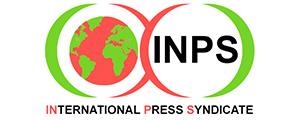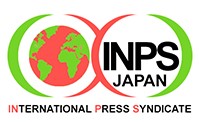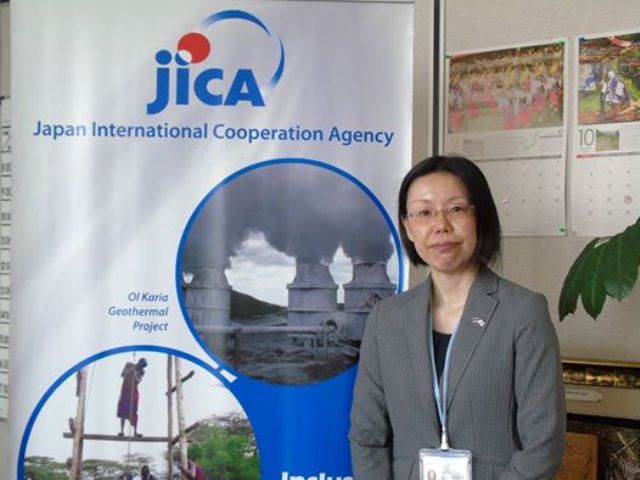NAIROBI (IDN) – Catherine Nduta, 26, was diagnosed with Multi Drug Resistant Tuberculosis (MDR-TB) in 2012, when she was a third year student at one of Kenya’s universities, where she was undertaking a civil engineering course.
“I was almost 6-month pregnant hence couldn’t start MDR-TB treatment. I was to either terminate the pregnancy for me to start medication or continue with normal TB medication until I give birth,” Nduta told a forum organized by StopTB Partnership Kenya, that attracted Kenya’s Members of Parliament (MPs).
“I finally underwent induction and my baby was removed prematurely for me to start medication. 12 months of injections and 24 months of taking 18 pills a day: life was hard,” says she, now mother of one son. | JAPANESE
Nduta is not a lone sufferer of MDR-TB. Nairobi and Mombasa, Kenya’s two biggest cities, host the highest number of normal tuberculosis cases due to poor urban settlements and high population.
60 percent of Nairobi’s 3.5 million population is living in slums because of an unavoidable deficit in housing, sanitation and nutrition, which make people vulnerable to infection.
“Drug Resistant TB (DR-TB) is an emerging threat in Kenya because of the difficulty in diagnosis and treatment. Its treatment takes close to 20 months and requires a direct cost of drugs of up to 3 million Kenyan Shillings (equivalent to some 28,000 USD),” Dr. Enos Masini, head of tuberculosis, leprosy and lung disease at Kenya’s Health Ministry, told IDN.
“Most of those who suffer from tuberculosis are poor and cannot afford pay for treatment,” he added.
With this in view, the Japan International Cooperation Agency (JICA) is engaged in supporting Kenya fight TB. Along with South Africa and Zambia, this East African nation ranks among three TB endemic countries in Africa.
While public health officials were jittery in 2013 about rising cases of drug-resistant strains of TB, JICA donated high-tech TB testing equipment worth 32 million Kenyan Shillings (some 313,528.96 USD).
“Strengthening the capacity of laboratories and their network (application of new laboratory testing methods such as use of fluorescent microscopes, improving drugs susceptibility testing to identify drug DR-TB and improving quality assurance and testing) has been JICA’s main area of assistance in TB control in recent years,” Keiko Sano, Chief Representative of JICA in Kenya told IDN.
JICA also donated 102 LED fluorescent microscopes to Kenya’s Public Health Ministry. The country had only 20 of such machines in all the public health facilities.
Kenya found itself in a dilemma in 2014 due to lack of MDR-TB drugs, and was constrained to borrow these from Malawi and neighbouring Uganda.
“It was a big embarrassment,” says Evlyn Kibuchi, chief national coordinator at StopTB Partnership Kenya, an organization that brings together partners in the fight against tuberculosis.
Sano said the international community on the whole, not only JICA, is of the view that domestic financing is key to sustainable control of high-burden diseases such as TB.
Communicable disease control high on JICA’s agenda
“We welcome the government of Kenya’s commitment to gradually increase its domestic financing. Also integration of TB-related services with other health services can save costs. Maintaining quality of integrated services in this context is crucial,” JICA’s Chief Representative in Kenya told IDN in an interview.
While Japan fully embraces the recently adopted 17 Sustainable Development Goals (SDGs) that will take over in December from the Millennium Development Goals (MDGs) for the next 15 years, Sano said, communicable disease control, TB included, is still high on JICA’s agenda.
“Japan recently launched its new five-year global health policy (2016-2020). We are committed to assist Kenya to achieve Universal Health Coverage (UHC) and believe in strengthening health systems, which is the basis of diseases-specific programmes to perform better,” Sano added.
James Murgor, a Kenyan Member of Parliament and member of the national parliament health caucus committee, is concerned about donor fatigue in the wake of this East African nation being ranked as a middle-income country. He pleads for increased government funding to address TB.
Murgor is referring to the World Bank’s latest estimates of Gross National Income per capita (GNI), which continue to show improved economic performance in many low-income countries, with Bangladesh, Kenya, Myanmar, and Tajikistan now becoming lower-middle income countries, joining those with annual incomes of 1,046 dollars to 4,125 dollars.
“For us here in Kenya, the fight against TB is 40 percent government-funded and 60 percent donor-funded, which is risky,” Murgor explained the rationale behind his anxiety.
According to the Health Ministry, “Tuberculosis remains a major cause of morbidity and mortality in Kenya. It affects all age groups, but has its greatest toll in the most productive age group of 15 to 44 years.” Estimates are that it claims 60 lives every day in Kenya.
Furthermore, as KIbuchi says, “TB is quite expensive when it comes to the workplace. It leads to absenteeism, workflow disruption, lose of productivity and direct cost to the affected person.”
It is estimated that world wide about 13 billion U.S. dollars are lost to TB, while Kenya loses about 110 million U.S. dollars.
Takashi Miura, JICA’s TB advisor, concurs with Kibuchi, arguing that the financial burden is considerable for MDR-TB patients since the treatment would take as long as two years.
“Even if the treatment itself is free-of-charge, the patients may not be able to work productively during the course of treatment therefore, loss of income would be inevitable,” he told IDN.
Only 1.3 percent of Kenya’s total health expenditure goes toward TB, Kenya’s fourth lead killer disease.
National Strategic Plan on Tuberculosis
On March 19, 2015, Kenya launched its National Strategic Plan on Tuberculosis, Leprosy and Lung Diseases (NTLD Program) for the period 2015-2018. It involves an expenditure of 25 billion Kenyan Shillings (some 250 million USD).
The government of Kenya has pledged some 5 billion Kenyan Shillings, the Global Fund about 7 billion while PEPFAR (the U.S. President’s Emergency Plan for AIDS Relief) has allocated under 7 billion, leaving an approximate budget gap of 6 billion Kenyan Shillings (some 59 million USD). In view of this, Dr. Masini of Kenya’s Health ministry argues that lack of funds might derail targets.
JICA’s TB advisor Miura stresses the need to implement high quality directly observed treatment to avoid a situation that could lead to development of a drug-resistant TB.
He further calls for establishment of patients’ sample referrals system and introduction of new laboratory techniques in order to monitor and to detect DR-TB cases early among high risk groups such as previously treated TB patients, those who had contacts with DR-TB patients, refugees, prisoners and those who have TB symptoms.
Launched early July 2015, Kenya’s first ever tuberculosis survey since independence in 1963 seeks to determine the prevalence of tuberculosis in Kenya – with the last done in 1958-1959 when over 80 percent of Kenya’s population was not born.
“We are going to screen 72,000 Kenyans and we have already screened 12,000. The purpose is to find out how much of TB is there in community so as to make adequate plans to move towards elimination of tuberculosis,” said Health Ministry’s Dr Masini.
JICA’s TB control advisor Miura said findings from the on-going prevalence survey might not be easily comparable with the first survey (done in 1958-1959), for the survey methodology is not exactly the same and that there was no HIV infection then.
“The ongoing survey will help in measuring the impact of TB control after the country’s adoption of the directly observed treatment strategy. It will further locate where missing cases are at the moment,” he said.
“It will also help in having a better understanding of the health seeking behavior of those with symptomatic TB and also the results will inform new direction of TB control,” said Miura.
Kibuchi of StopTB Partnership Kenya told IDN that back in 2011 when JICA wanted to pull out its support towards the fight against TB, her organization wrote a memo requesting not to.
“We did a memo requesting JICA not to pull out its support, and they agreed to continue for two more years. This is not the time for donor agencies to pull out as we seek to reduce TB prevalence,” said Kibuchi.
In 2014, Britain applauded Kenya for being the lead single country globally having 158 Members of Parliament signing commitment in support of the Barcelona Declaration, which established a new Global Parliamentary Caucus on TB to press for a more effective response to the TB epidemic.
Hon Stephen Mule, a Kenyan parliamentarian, has been in the lead in urging his colleagues to sign in the declaration in demonstration of their support to the global agenda of eliminating TB. [IDN-InDepthNews – 20 October 2015]
Photos top down: 1) Keiko Sano, JICA’s Chief Representative in Kenya | Credit: JICA, Kenya. 2) Catherine Nduta, a Multi Drug Resistant TB survivor speaks during the recent October meeting organized by StopTB Partnership Kenya.


